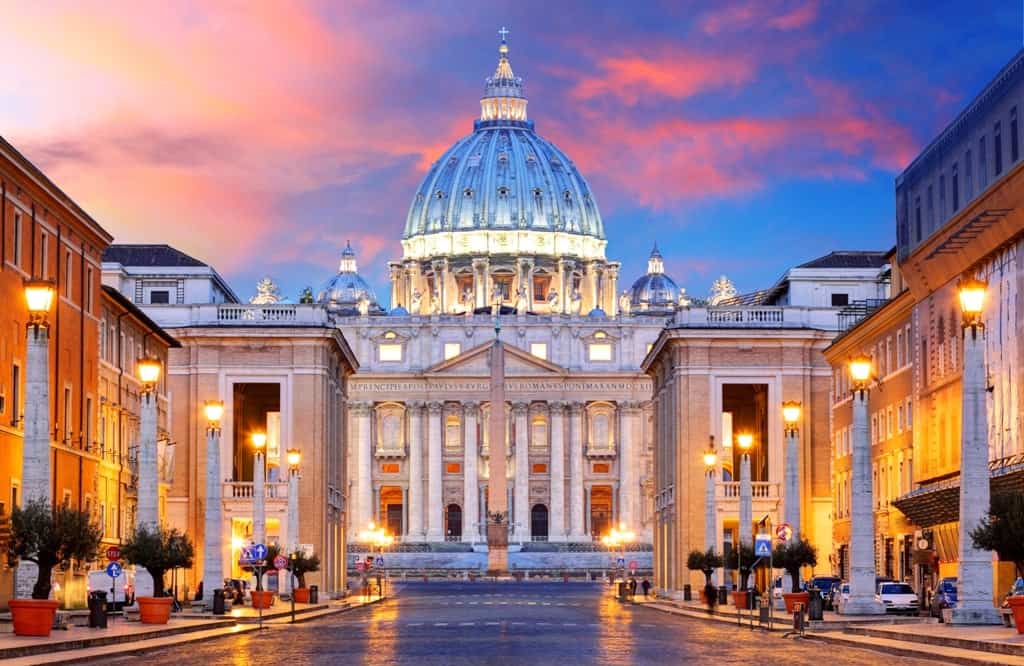The Vatican is the smallest state in the World and it is an unmissable stop on any trip to Rome. It is worth a full day of sightseeing, thanks to its great spiritual value and its richness of works of art by many worldwide famous artists.
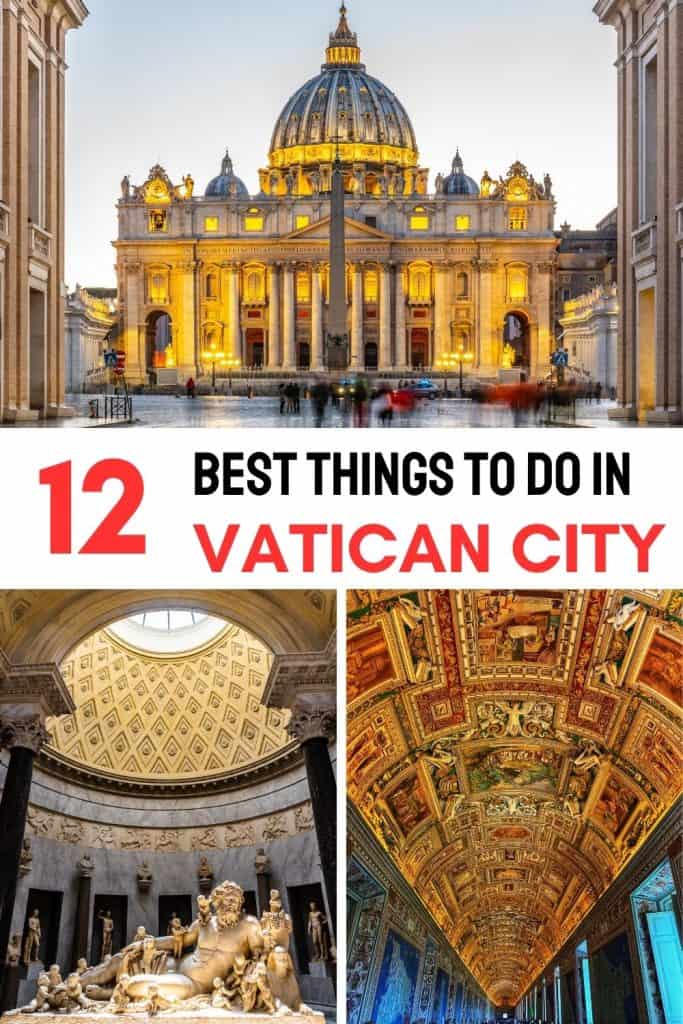
Disclaimer: This post contains affiliate links. This means that should you click on certain links, and then subsequently purchase a product, I will receive a small commission.
Table of Contents
12 Things to do in Vatican City
1. Admire the majesty of St. Peter’s Square
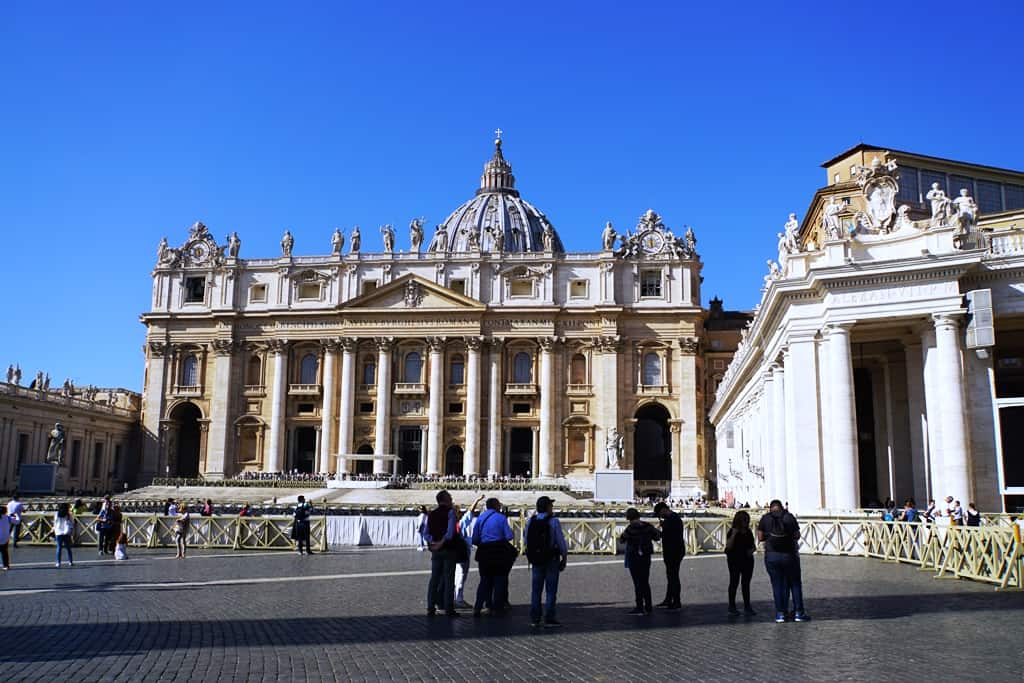
One of the first things you’ll see in Vatican City is this huge square that can host more than 300.000 people on special occasions (ex: Jubilees, Pope’s blessings, Masses, etc.). This square was designed by Bernini in 1667 and its main feature is its imposing colonnade. In the middle of the square, you’ll also see an Egyptian obelisk and the so-called “twin fountains”. These fountains only look the same, because they were designed by two different artists (Bernini and Maderno) in different years (1677 and 1614).
2. Visit St. Peter’s Basilica
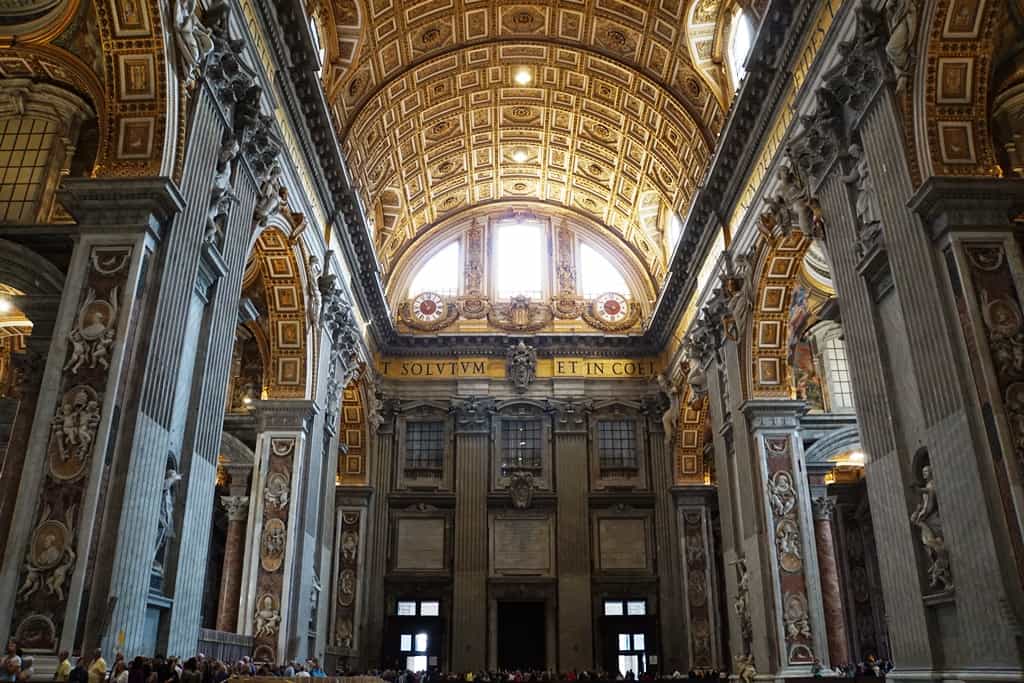
It is the Pope’s church and the most important religious place for Christians. It was inaugurated in 1626 and several famous artists worked here (Bramante, Bernini, Michelangelo, and Maderno).
What are the main points of interest inside the basilica?
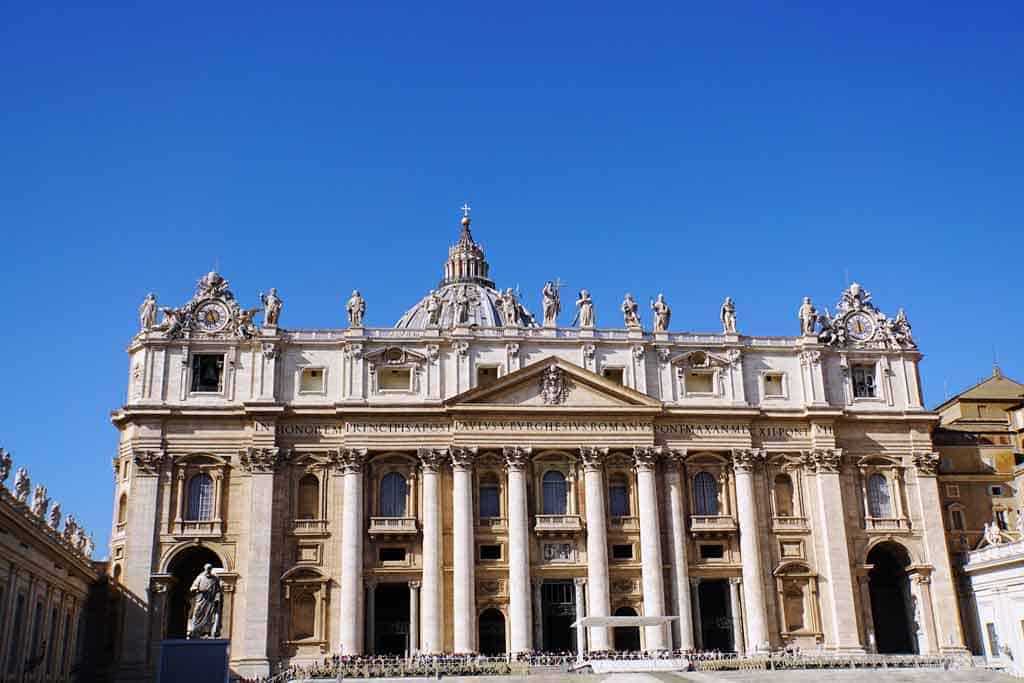
- The Dome: it was designed by Michelangelo and built by Giacomo della Porta and Domenico Fontana. Its steep climb is surely worth the effort because it will offer you a 360° view of Rome. Opening hours: from 7.30 a.m. to 5 p.m. (6 p.m. in summer). Cost: 8 euro
- La Pietà: it is one of the most appreciated Italian sculptures of all time. Michelangelo conceived it when he was a young artist of about 24 years old and the legend says that it took him 9 months only to choose the right block of marble. This important work was commissioned to him to celebrate the Jubilee in 1500. You can see it in the first chapel on the right of the main entrance.
- Tomb of Giovanni Paolo II: it is a pilgrimage destination for Christians from all over the world and you can see it in the second chapel on the right of the main entrance.
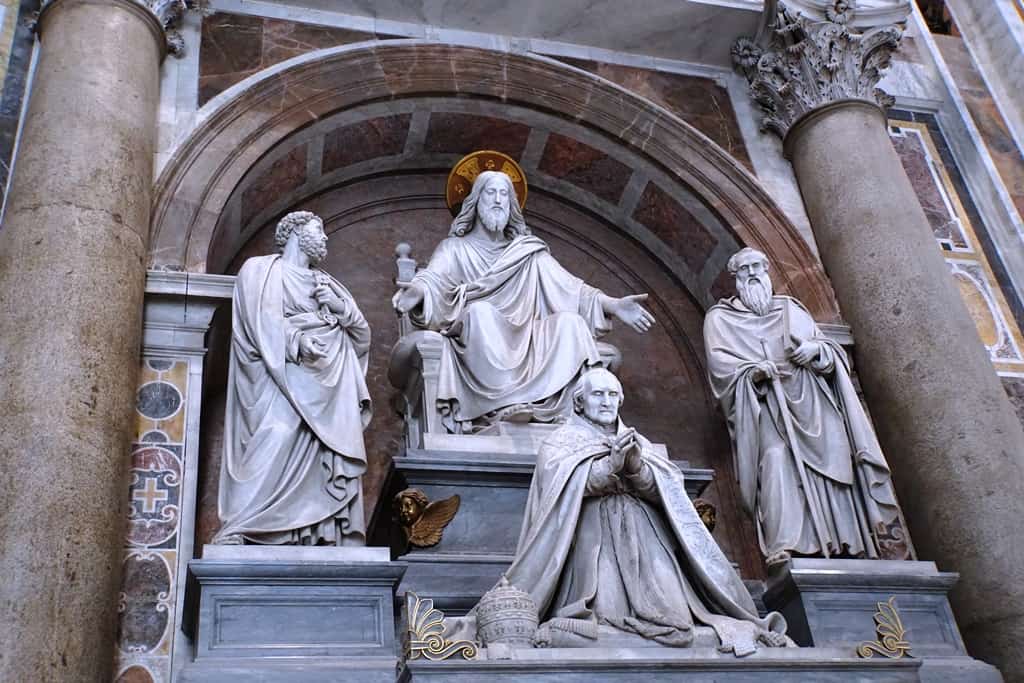
- Holy Door: it is the fifth door on the right. It is only opened during the Jubilees (once in 25 years) and it can only be opened and closed by the Pope himself.
- Bernini’s Baldachin: it was made in 1633 and it is a Baroque masterpiece. You can see it right in the middle of the basilica, under the dome. Its main feature is its soft and light look reminding of a subtle tissue despite being made of marble.
- Statue of S. Peter: it dates back to the XIII century and the artist is unknown. This bronze statue represents S. Peter holding the church’s keys and blessing the crowd. Pilgrims are used to touching his right foot out of devotion and you can see it’s now almost entirely worn out!
To fully enjoy your visit and skip the line at the entrance you can join this guided tour.
Address: St. Peters’ Square. Opening hours: from 7 a.m. to 6.30 p.m. (7 p.m. in summer). Cost: free.
3. Visit the Museum of the Treasure
A collection of precious sacred objects. Opening hours: from 9 a.m. to 5.15 p.m. (6.15 in summer). Cost: 8 euro.
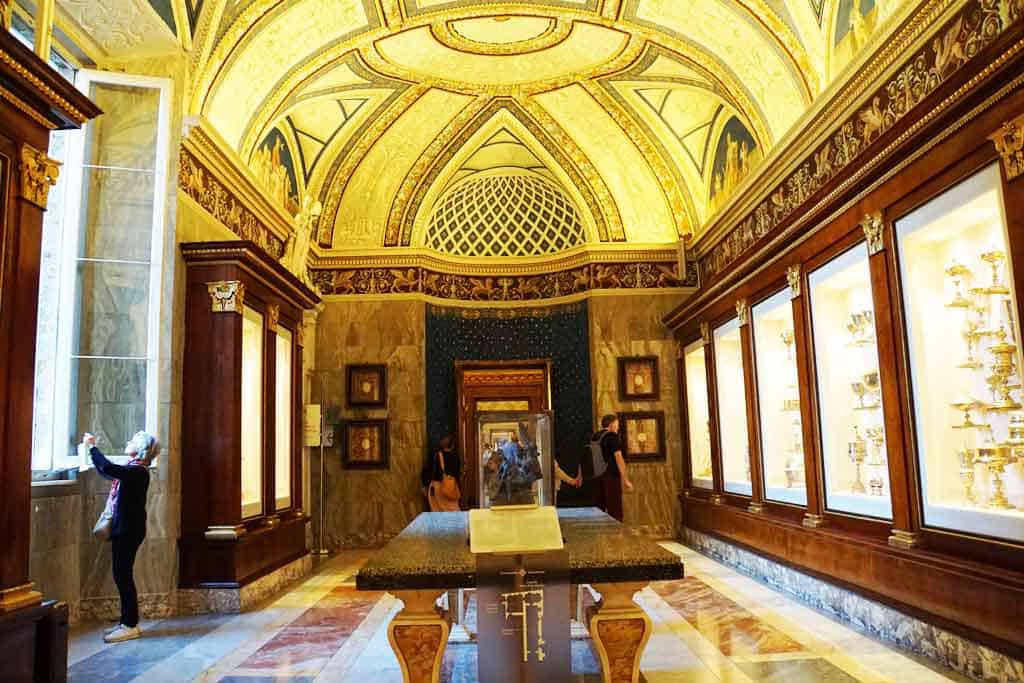
4. Explore the underground to reach the Sacred Grottoes
They are right under the central nave of the Basilica and they house the tombs of the Popes. The most famous one is the tomb of Bonifacio VIII with the beautiful statue by Arnolfo di Cambio. Opening hours: from 7 a.m. to 6 p.m. Cost: free.
5. Walk along Via della Conciliazione
It is a large street connecting S. Angelo Castle to St. Peter’s Square. This is also the border dividing Italy from the Vatican State. The border is symbolized by a line made in travertine marble.
6. Spend half a day wandering through the Vatican Museums
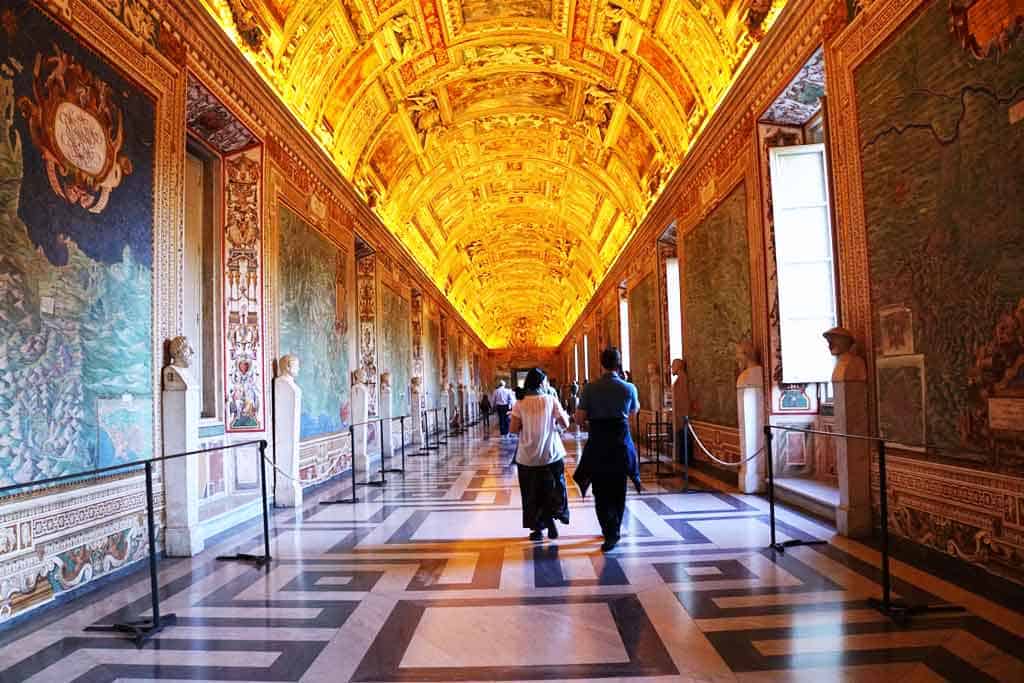
Together with St. Peter’s Basilica, they are the main reason why tourists from all over the world visit the Vatican State. The first part of this huge museum dates back to 1503 when Pope Giulio II offered his private collection to the city.
What to see?
- Sistine Chapel: it is the main attraction of the museum and it is famous for its frescoes and for being the room where the Pope’s election takes place. It takes its name from Pope Sisto IV that built it in 1481. Michelangelo took 4 years to paint it!
- Raffaello’s Rooms: these rooms were decorated by Raffaello. Their names are Constantine’s Room, Eliodoro’s Room, Signature’s Room and Fire’s Room.
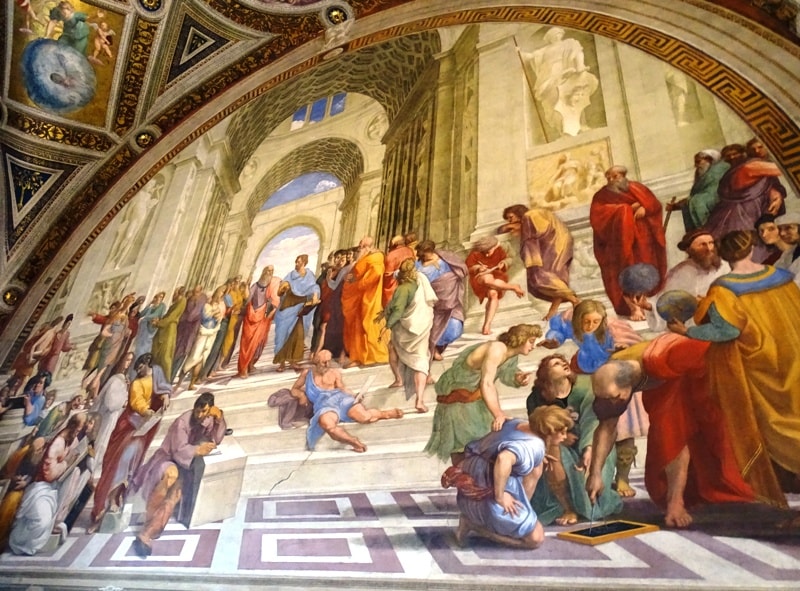
- Pinecone’s Yard: it takes its name from a huge bronze pinecone located in a niche. It is really ancient and it was found in Agrippa’s baths. Another famous statue you can see here is “The Sphere” by Arnaldo Pomodoro.
- Apartment of Pio V: it is famous for the frescoes by Vasari.
- Gallery of the Geographic Maps: it is entirely decorated with frescoes representing geographic maps. It is also interesting to learn how geography was conceived in the Renaissance period.
- Apartment of Pope Borgia: Alessandro VI Borgia was one of the most controversial Popes in Italian history because of his declared nepotism and its many intrigues. His apartment was decorated by Pinturicchio.
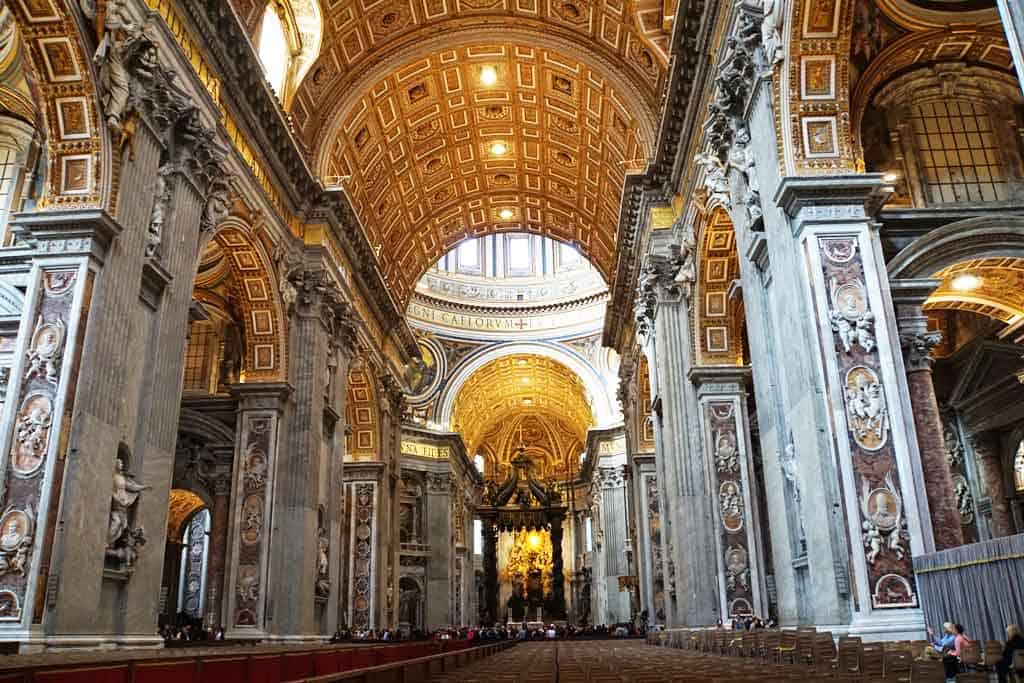
The best way to enjoy the Vatican if you don’t have much time is by this Pristine Sistine, early entrance small group Vatican tour by the Walks of Italy. The reason I like this tour is that you get inside the Vatican one hour before it opens, the group is up to 14 people and you get to see the Vatican in under 4 hours.
7. Have a walk in the Vatican Gardens
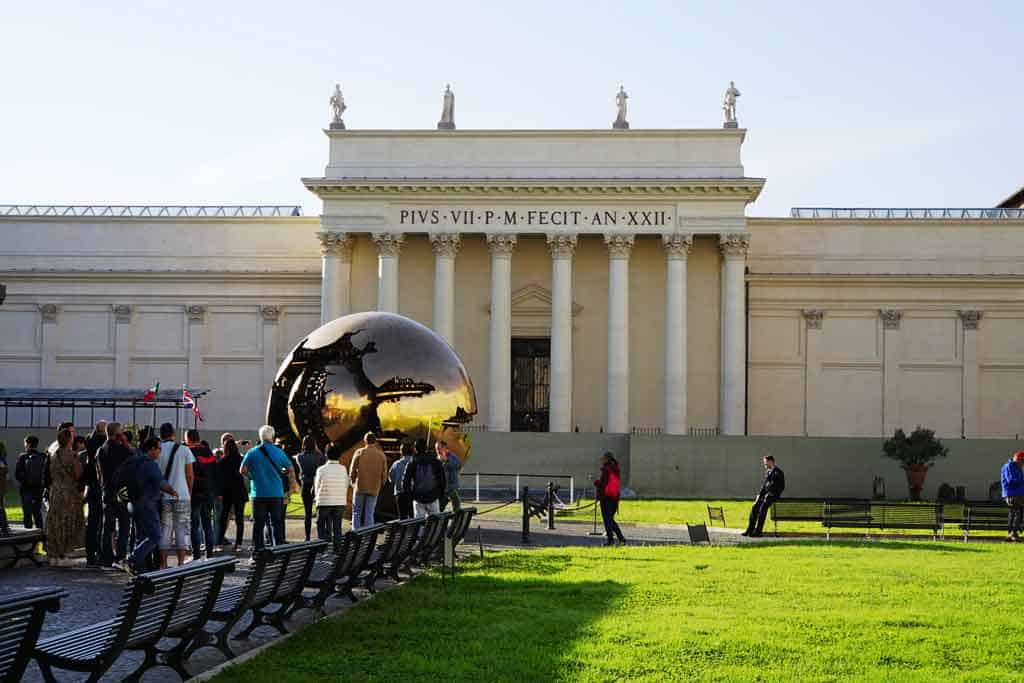
This beautiful park of 32 hectares dates back to the XVI century when Pope Niccolò III planted an orchard and a grassland. In the XVI century, Pope Giulio II asked Bramante to design a Renaissance garden with a maze, fountains, statues, and belvedere. Today you can only visit the gardens by joining a guided tour. Address: via Paolo VI 29. Opening hours: from 9 a.m. to 6 p.m. Closed on Wednesday and Sunday. Cost: 33 euro (guided tour lasting 2 hours).
8. Discover the Vatican Necropolis
This is another important place for Christians because St. Peter is buried here. This necropolis is located underground, far below St. Peter’s church, where an ancient cemetery was discovered. You can join a guided tour to visit St. Peter’s basilica and the necropolis below at the same time. Opening hours: from 9 a.m. to 6 p.m. and Saturday until 5 p.m. Closed on Sunday. Cost: 12 euros.
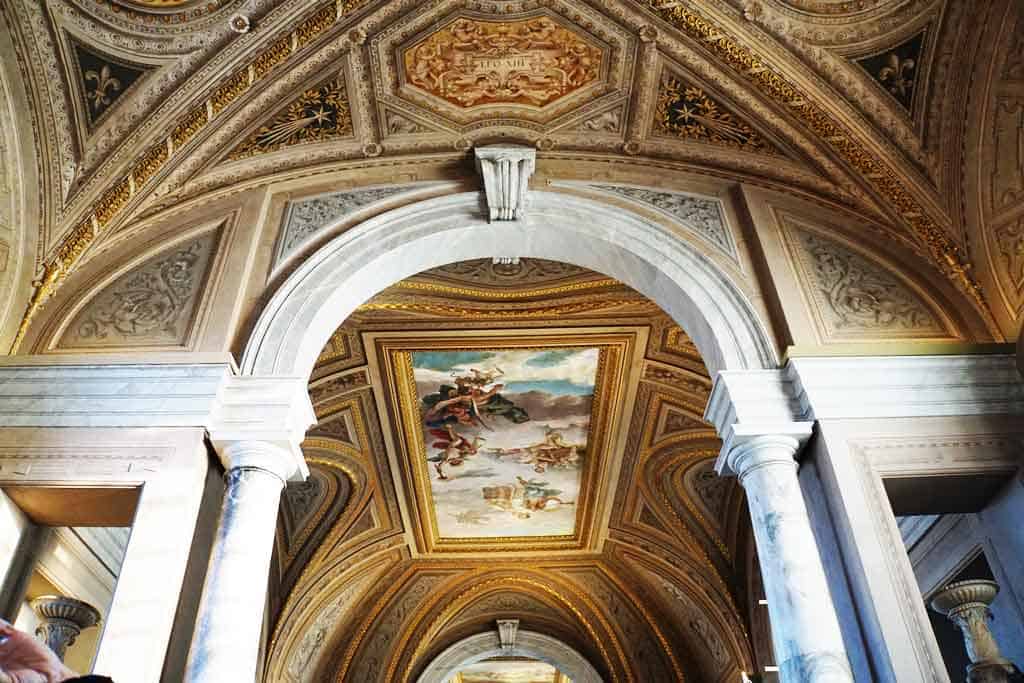
9. Get the Pope’s blessing
The building overlooking the colonnade in St. Peter’s Square is called Palazzo Apostolico and it is where the Pope lives and speaks to the crowd. He speaks from the window of his private office. To see him, you shall go there on Sunday at midday.
10. Visit the church of St. Anne of the Grooms
Grooms were the court attendants during the Middle Ages and St. Anne was their patroness. This nice church dates back to the XVI century and it is located on the border separating Italy from the Vatican State, right close to Porta S. Anna (one of the entrances to the Vatican). Address: via S. Anna Opening hours: from 6 a.m. to 1 p.m. Cost: free.
11. Watch the Swiss Guards
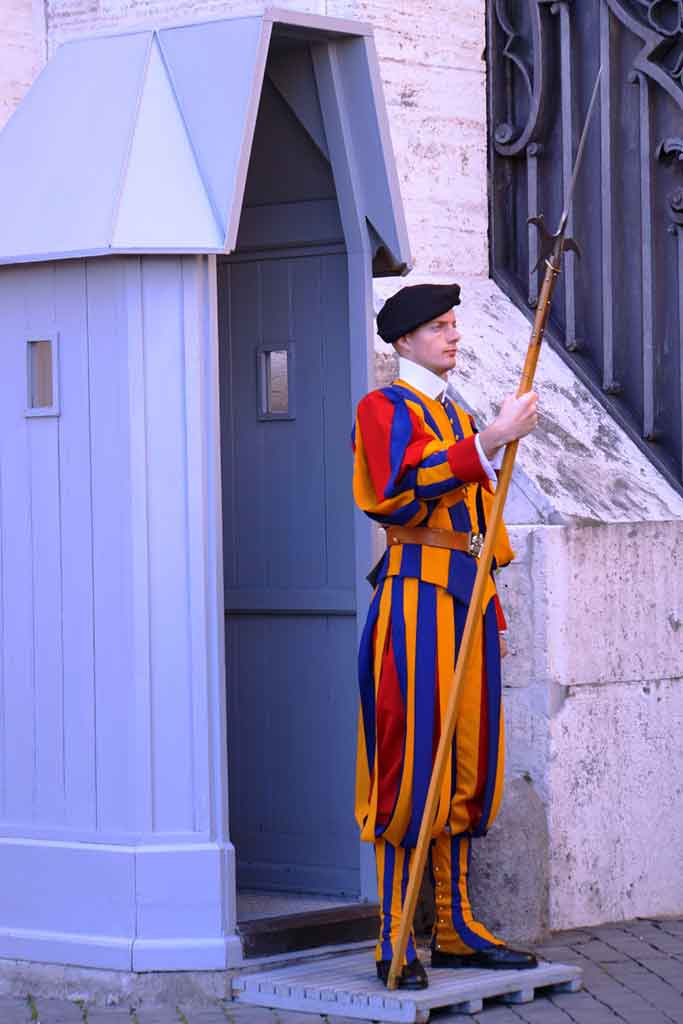
They belong to the Pope’s army, which was established in 1506. They protect the Vatican State and they are the Pope’s bodyguards. On official occasions, they still wear the traditional Renaissance costume and they bring a halberd and a helmet. During ordinary days, they are dressed like modern bodyguards. Only Swiss citizens are allowed to enroll as Swiss Guards.
12. Visit the church of St. Stephen of the Abyssinians
It is located behind St. Peter’s basilica and it dates back to the V century A.C. It takes its name from a former convent dedicated to host Copt monks (mainly from Egypt). Its most important features are its decorated portal and the remains of the medieval church.
Tip: Visiting there is an essential Rome experience, and it will be quite overwhelming! Before anything, you should know that the queues are huge. No matter how much you think you can wait, you can’t. The queues go on for seemingly forever, so I recommend a skip a line tour or an early entry small group tour. Both times I’ve been there were with the skip the line guided tour, and it added to the overall comfort and convenience of my entire visit there. If you’re not really into tours, you can wander on your own and skip the lines.
How to get to Vatican City?
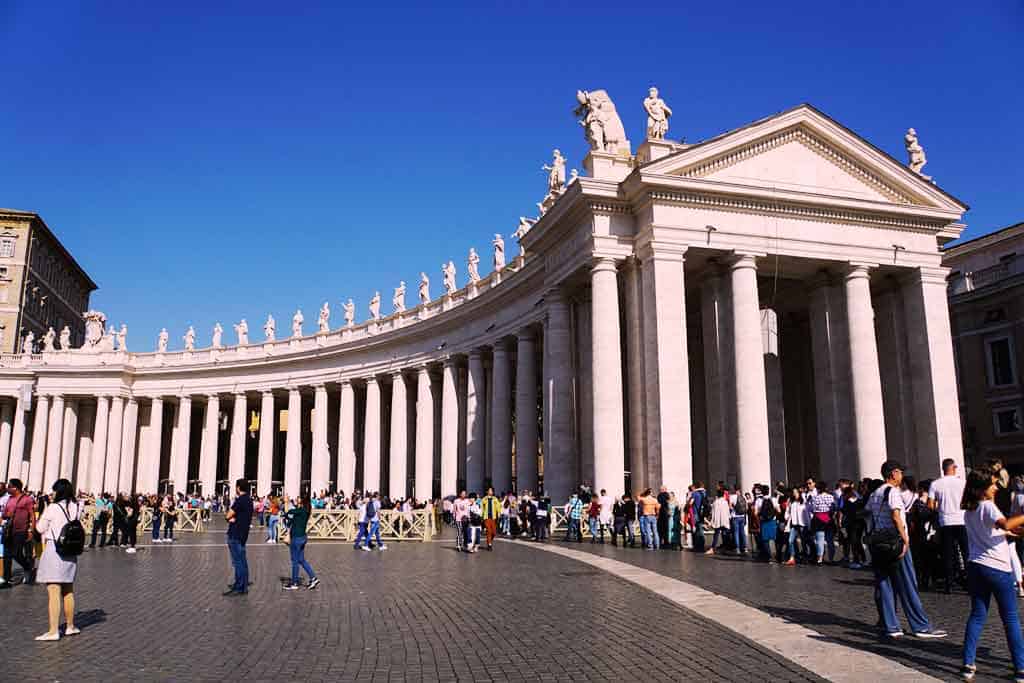
The fastest way to get there is catching the subway (line A). There are no stops inside the Vatican State, but the nearest ones are Ottaviano (500m from the main entrance of the Vatican Museums) and Cipro.
How to see the Pope?
- Papal Audience: it takes place every Wednesday at 9.30 a.m. in Paolo VI Room (Palazzo Apostolico). The Pope receives a group of people that booked in advance. When the group is particularly large, the audience takes place in the church, while if the group is really huge, it takes place in the square. How to book: fill in the form you can download here http://www.vatican.va/various/prefettura/it/biglietti_it.html and send it by fax to the Papal Household. It is free, but you need to get a ticket that will allow you to enter. That’s the schedule of the next audiences: http://www.vatican.va/various/prefettura/it/udienze_it.html . Remember that waiting lists are really long (up to 3 months!) and plan your trip accordingly.

- Mass: in order to attend a Mass celebrated by the Pope you must get a ticket (because of the high demand). The procedure is the same as for the audiences. Schedule of the next Masses: http://www.vatican.va/various/prefettura/index_it.html
- Angelus: it is a special prayer that the Pope says from his window at Palazzo Apostolico. Every Sunday at midday he gives a speech about a special topic, he says the Angelus and gives his blessing to the crowd gathered in St. Peter’s Square. If you want to assist, go there at least 2 hours before in order to have the time to go through the security checks.
Practical tips for visiting Vatican City
- Accommodation: while there are no hotels in Vatican City, you can choose to stay in the Prati district. It is right on the border and it is a nice and quiet neighborhood. If you specifically visit Rome in order to see the Pope as a religious pilgrimage, you can also stay at some convents run by local nuns (ex: casamissionariepallottine.it, casapreziosissimosangue.it or www.casaperferiecristore.org).
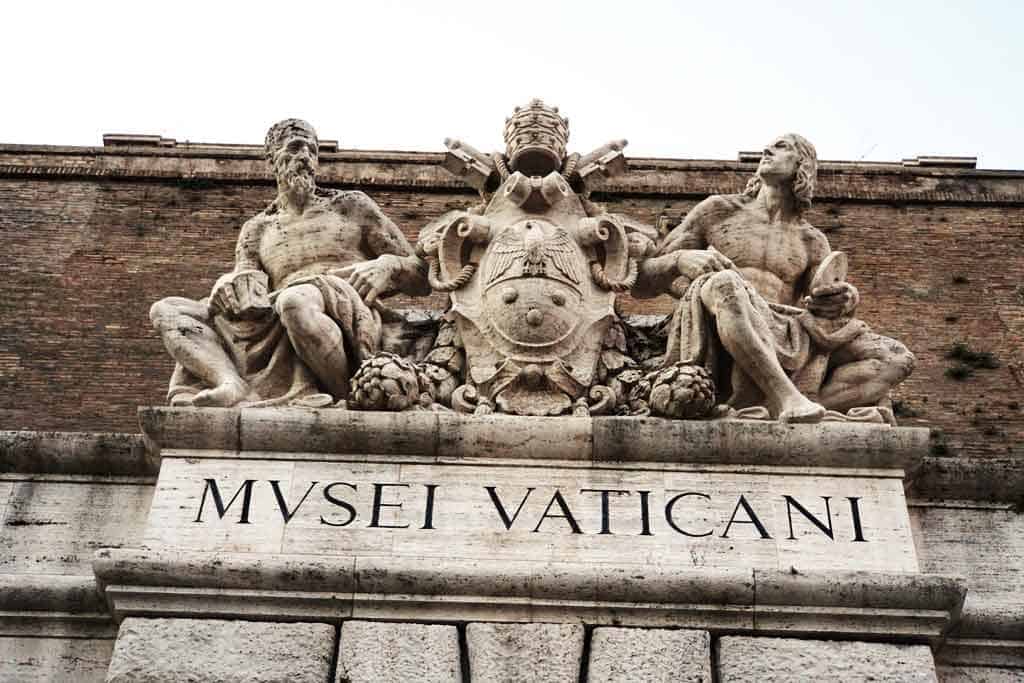
- Security checks: Vatican City is one of the most controlled areas in the world and you have to be prepared to go through several security checks when moving around. Keep in mind that large bags, backpacks, and umbrellas are not allowed inside the Vatican Museums (there is a wardrobe where you can leave them) and that metal objects shall be removed in order to pass the metal detector.
- Clothing: plunging necklines, mini-skirts, shorts and singlets are not allowed. Both men and women shall remove their hats while entering a church.
- Bring some water with you: if you plan to see the Pope in St. Peter’s Square don’t forget to bring some water with you, especially in summer. Hat, sunglasses, and sunscreen are also a good idea if you have to wait long hours under the sun.
- No pictures: remember that in the Vatican Museums you cannot take pictures using flash, because it would damage the works of art. Photos and videos are strictly forbidden in the Sistine Chapel.
- Buy your tickets online: it is always best to purchase your tickets online and in advance so that you can skip the lines and save some precious time for more visits!
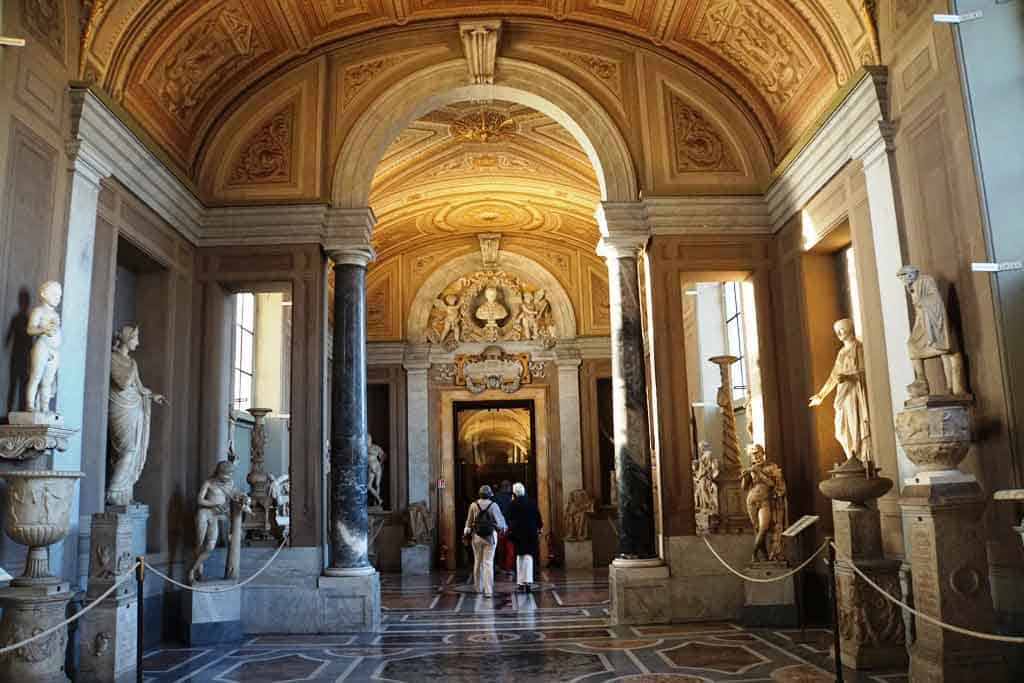
- Avoid Easter week: it is the worst time of the year to visit Vatican City because of the crowds of religious people and ordinary tourists that gather there to celebrate Easter.
- Get up early: if you visit Vatican City early in the morning, you’ll enjoy a relatively calmer atmosphere allowing you to wander around at your own pace.
- Enjoy the Vatican Museums for free: the last Sunday of each month the entrance is free!
- Beware of the nearest bars and cafés: the closest they are to the Vatican borders the more expensive they become. It is best to eat in the Prati district and avoid the overpriced venues located right on the borders.
- A special idea to spend Christmas Day in Rome: a guided tour of the city and the Christmas blessing of the Pope!
You might also like:

